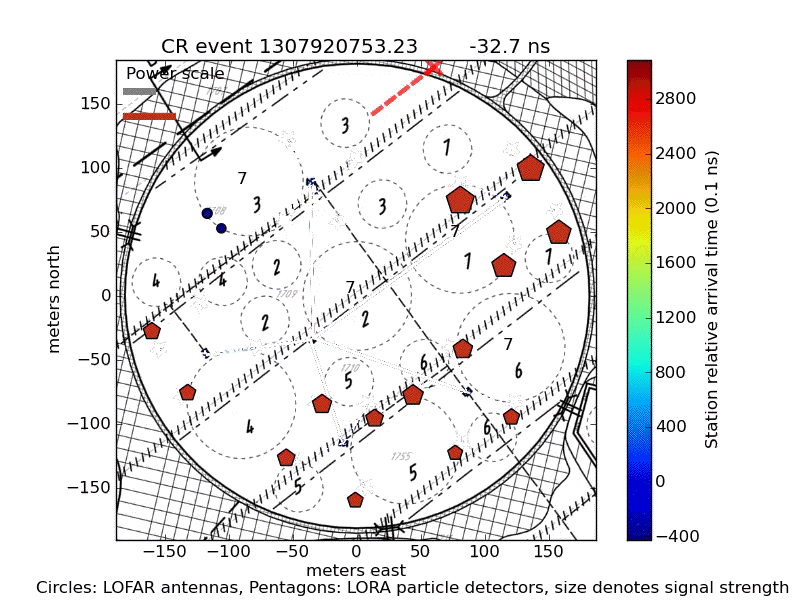Daily Image
13-07-2011First LOFAR cosmic ray detection
| Submitter: | Sander ter Veen |
| Description: | This image shows a visualisation of one of the first cosmic rays detected simultaneously by LOFAR and LORA. When a cosmic ray hits the earth atmosphere, a cascade of secondary particles is created. In this shower charge seperation between electrons and positrons occurs due to the geomagnetic field. This gives rise to geosynchrotron radiation. The goal of the LOFAR Cosmic Ray Key Science Project is to detect this radiation to study the properties of the primary cosmic rays as well as the development of the particle cascade and the radiation mechanism. Cosmic rays are not the only source of short radio signals. Therefore, we have installed a particle detector array, the Lofar Radboud Air shower array (LORA) to train our detection algorithms. In the movie they are denoted by the red pentagons in the layout of the superterp. Their size denotes the number of muons and electrons detected in each detector. From the time of arrival and signal strength the shower core and direction can be calculated (Red cross and line). The energy of this event is at least 2.6e17 eV. When LORA detects a cosmic ray signal it requests a read-out of a ring-buffer (Transient Buffer Board data) from each LOFAR dipole on the superterp. For high energy cosmic rays there is a short pulse visible in each LOFAR antenna. The circles in the image represent individual LOFAR dipoles. Their size denotes the strength of the signal and the color denotes their time of arrival. There are two ways to verify that this is indeed a cosmic ray signal: The arrival direction fits the direction that LORA provided and the radiation is stronger near the shower core, because this radiation is strongly beamed. More information is provided at this weeks LOFAR status meeting. |
| Copyright: | Sander ter Veen |
| Tweet |  |
